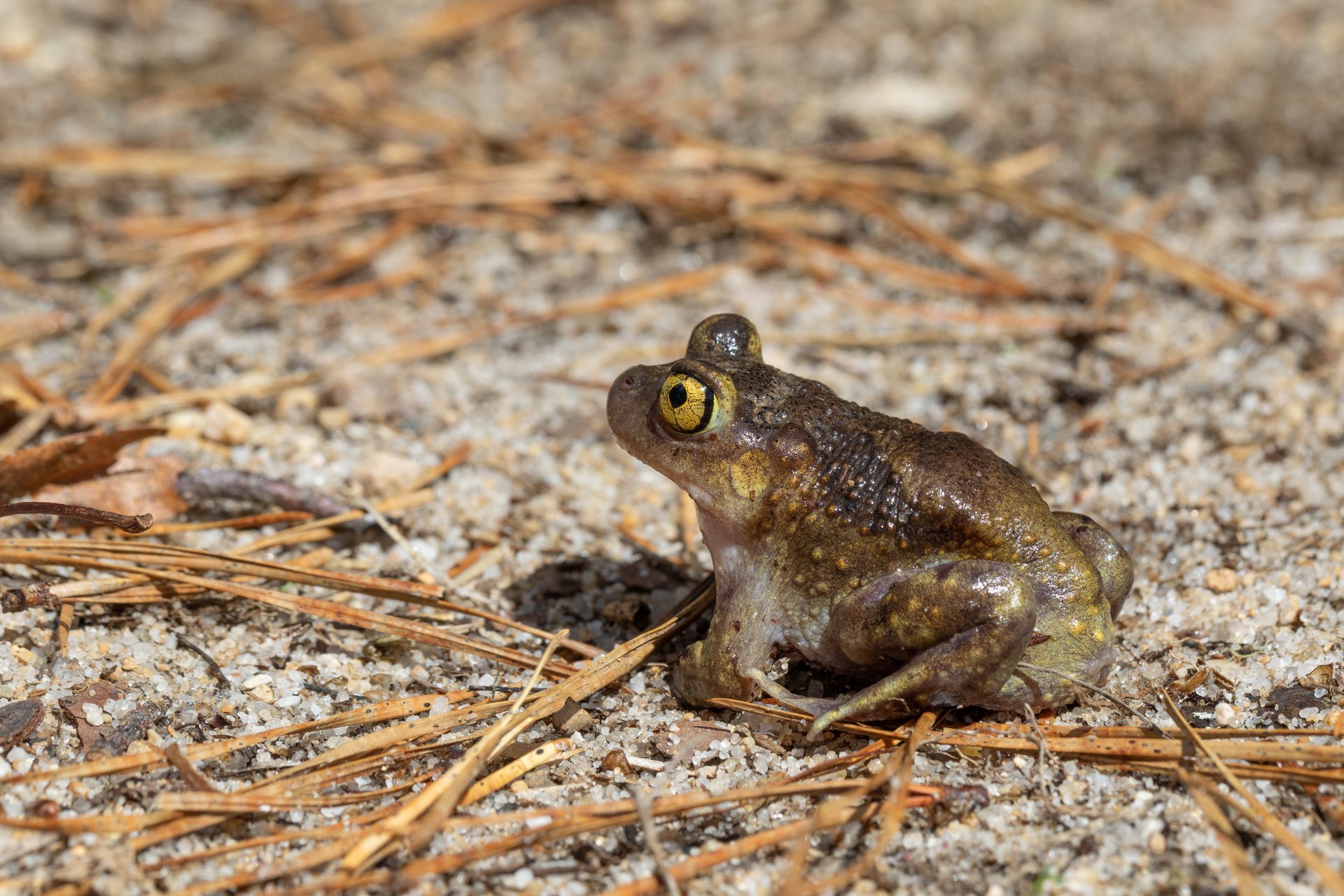Eastern Spadefoot Toads
This brownish animal is often called a spadefoot toad, though it’s not related to the true toads. The Eastern Spadefoot Toad can grow to a length of 3 inches and varies in color from yellow to brown.
About the Eastern Spadefoot Toad
The term spadefoot comes from the hard digging structures on its hind feet. Rarely seen, it spends much of its time underground or hunting for small prey at night. After a strong rainfall event during the warm months, it breeds in shallow temporary pools. It’s mostly found in the Connecticut River Valley and on Cape Cod.
Where to Find Spadefoot Toads
They are mostly found in the Connecticut River Valley and on Cape Cod. Massachusetts is at the northern end of its range; it occurs as far south as Florida, and as far west as Missouri.
The spadefoot spends most of its life hidden underground except to breed and forage at night. It emerges to breed in vernal pools following heavy rains in spring and summer.
Vernal pools are small, isolated water bodies that hold water only periodically. Spadefoots prefer the shallowest of pools, between 4” and 12” deep, with few predators and competitors. In order to succeed in these highly restrictive habitats, spadefoots have adapted a very flexible and opportunistic lifestyle.
How to Identify a Spadefoot Toad
This species’ unique features include:
- A dark projection on its hind foot, used for digging (the “spade”)
- Yellow eyes with vertical pupils
- A vase-like pattern on its back
- Relatively smooth skin with tiny warts
- A sheep-like “baaaa” call
Threats Facing Spadefoot Toads
The spadefoot’s habitat has suffered heavily from development. People have drained wetlands for farmland and urban development, drawn down water tables that support their vernal pool habitats and have built roads that make for hazardous travel from uplands to breeding pools.
As a result, the once-widespread spadefoot is now listed as threatened under the Massachusetts Endangered Species Act.
How Mass Audubon is Helping Spadefoot Toads
Long Pasture Wildlife Sanctuary on Cape Cod is working with partners to establish a viable population of spadefoots at Ashumet Holly Wildlife Sanctuary in Falmouth. Learn more about the Spadefoot Toad Conservation Project
How You Can Help Spadefoot Toads
Here are some ways that you can learn more and help preserve the spadefoot for generations to come:
- Get involved in certifying vernal pools.
- Report sightings of the species to the Massachusetts Natural Heritage and Endangered Species Program (Mass NHESP).
- Support the protection of wetlands from development.
- Educators: Create wetlands on your campus with us and incorporate Long Pasture’s Spadefoot Toad Project educational programming into your curriculum.
- Environmental Professionals: Attend the annual Wetlands Restoration Workshop that takes place each June.



